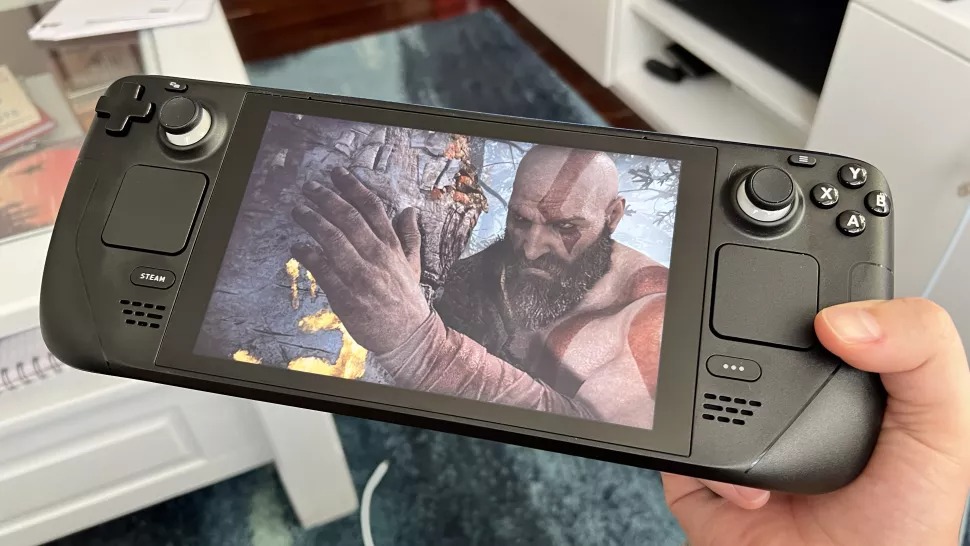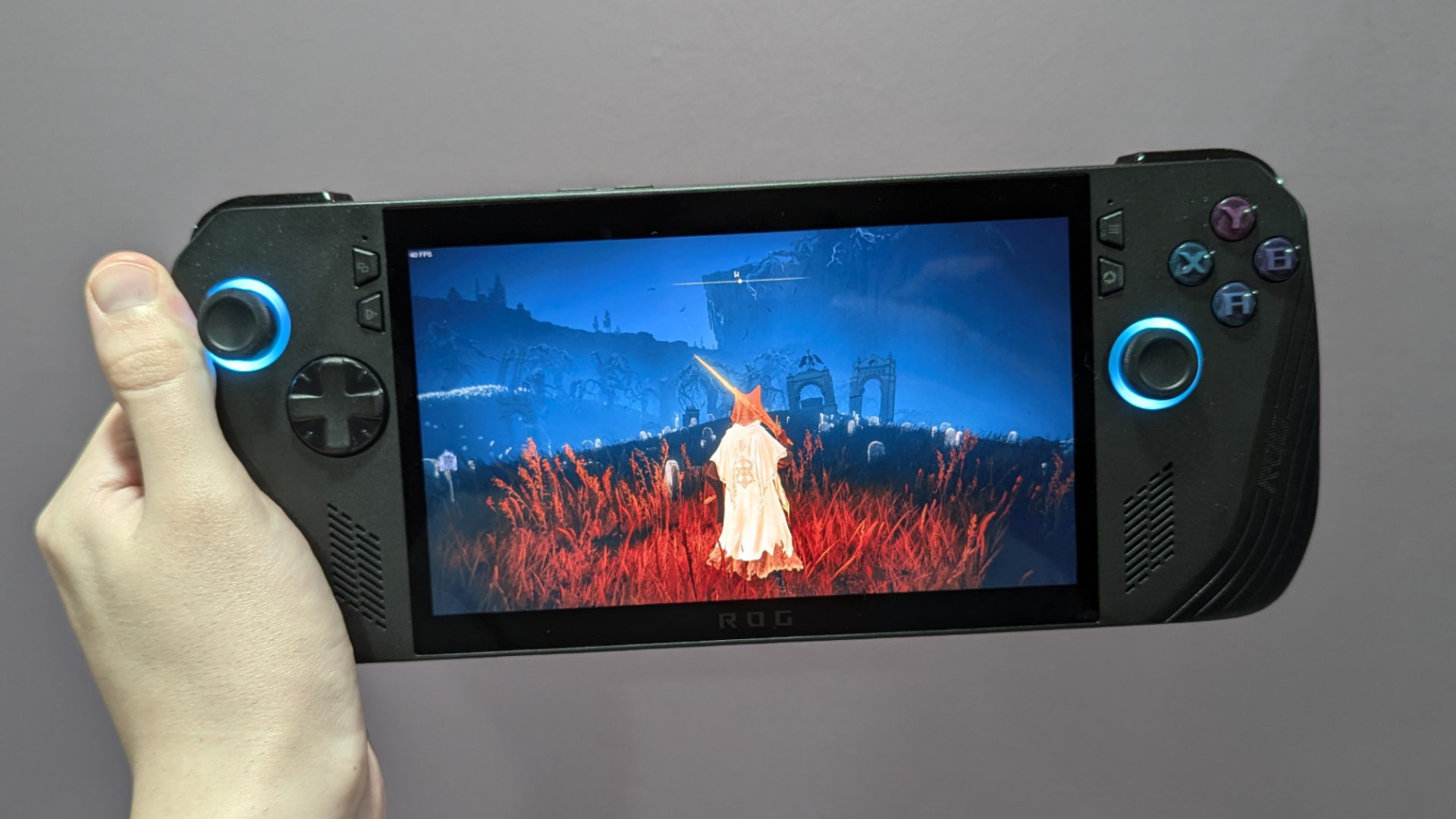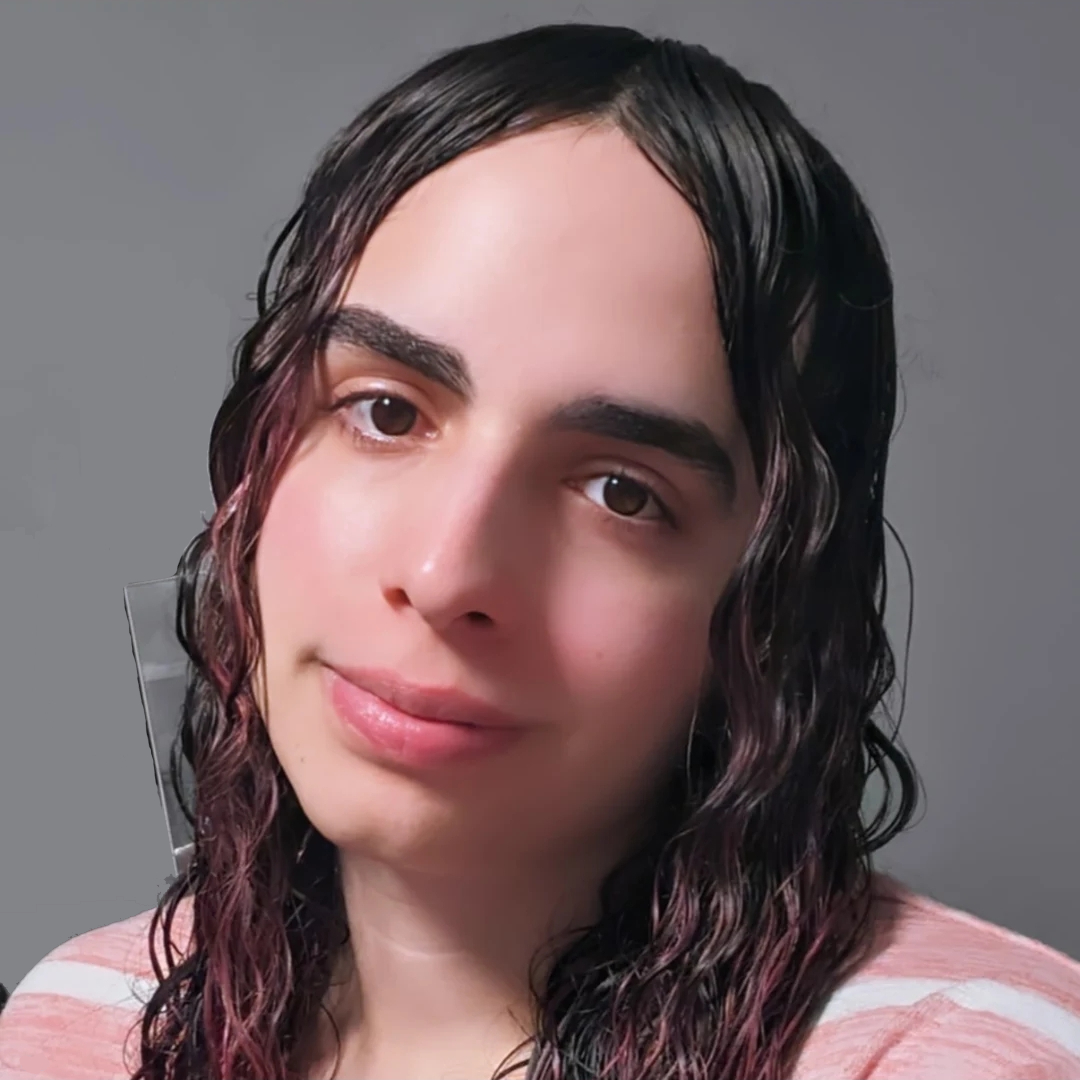How AMD could make Valve's Steam Deck obsolete
Valve stands no chance against AMD Ryzen Z2

Valve's Steam Deck may still be the poster child of handheld gaming PCs, but its competition is really heating up.
Since the launch of the Steam Deck, Valve's competitors have unsurprisingly not gotten any less serious. Jack Huynh, Head of Computing and Graphics at AMD, confirmed the Ryzen Z2, the successor to Ryzen Z1, at an AMD and Microsoft conference during IFA 2024. Meanwhile, Digital Trends reported last week that the company is working on the upcoming handheld gaming console chip.
While that may not mean a lot yet, for the burgeoning world of handheld gaming PCs, the impact could end up being huge. The Z2 is currently set to see an early 2025 launch date, and could eventually find its way to the new Asus ROG Ally and Lenovo Legion Go handhelds.
Naturally, the Ryzen Z2 is expected to be faster than the Steam Deck's older APU — a lot faster. Compare the Z2 to the Steam Deck's current APU, and well... Let's just say things aren't looking great for Valve.
The Steam Deck will be even more outdated soon
The Steam Deck might have been the first to make a splash in the market, but it has been behind in hardware when compared to what modern chips offer since its initial launch.
The original Steam Deck launched in 2022 with a 7nm AMD graphics base built upon the RDNA 2.0 architecture, which has been available since 2020. Even when Steam Deck launched its OLED model with the new "Sephiroth" GPU, it still used RDNA 2.0.
In comparison to the AMD Ryzen Z1 Extreme utilizing RDNA 3.0, which launched a few months prior to the Steam Deck OLED, the raw power of its chip is not even close. Sephiroth boasts a theoretical performance of 5.12 teraflops at FP16, whereas the Ryzen Z1 Extreme is as high as 16.6 teraflops.
Stay in the know with Laptop Mag
Get our in-depth reviews, helpful tips, great deals, and the biggest news stories delivered to your inbox.

Sephiroth has 512 shader units, 32 texture mapping units, 16 render output units, 8 compute units, and 8 ray tracing cores. Its base clock speed is 1,000MHz, while its boost clock is at 1,600MHz.
The Z1 Extreme, on the other hand, features 768 shader units, 48 texture mapping units, 32 render output units, 12 compute units, and 12 ray tracing cores. With a base clock speed of 1,500MHz and boost clock speed of 2,700MHz, it's hard to get around the fact that Steam Deck is plain and simply behind.
As reported by Digital Trends, Huynh also mentioned that he wants to be able to play Black Myth: Wukong for three hours on a handheld, rather than 45 minutes that's possible on current hardware. While that isn't confirmation that the Ryzen Z2 will have significantly improved battery life, it's clear that it's a priority for the company.
To make matters even worse for the Steam Deck, according to Jez Corden from Windows Central, the Z2 will be based on AMD's Strix Point. We've already tested a laptop with a Strix Point chip — the Asus Zenbook S16 with an AMD Ryzen AI 9 HX 370 — and we saw it pull a powerful 63 frames per second out of Civilization VI: Gathering Storm at 1080p on medium graphics. That's compared to the Lenovo Yoga 7i 2-in-1's AMD Ryzen 7 8840HS (which is comparable to an Ryzen Z1 Extreme) managing 48 frames per second on the same test. That's around a 30% increase in performance.
To put it plainly, Valve is doomed unless it responds with a more powerful Steam Deck.
How Valve needs to respond with Steam Deck 2
In an interview with The Verge, Valve Coder Pierre-Loup Griffais said, "Changing the performance level is not something we are taking lightly, and we only want to do so when there is a significant enough increase to be had."
That was a year ago, so it might be too soon for Valve to believe it has any reason push for a Steam Deck 2, though the launch of the latest Strix Point AMD chips could be enough of a reason for the company to invest.
Casting even more doubt, Griffais said, "We also don’t want more performance to come at a significant cost to power efficiency and battery life. I don’t anticipate such a leap to be possible in the next couple of years."
It's entirely possible this implies that a Steam Deck 2 won't see a 2025 release either. After all, the Valve Index launched in 2019 and hasn't seen a new iteration in the last five years.
It's clear that Valve isn't as gung-ho about launching a new handheld whenever it can, but considering what we know about AMD Ryzen Z2 thus far, it's time for Valve to match its competitors or be left in the dust.
More from Laptop Mag

Self-described art critic and unabashedly pretentious, Claire finds joy in impassioned ramblings about her closeness to video games. She has a bachelor’s degree in Journalism & Media Studies from Brooklyn College and five years of experience in entertainment journalism. Claire is a stalwart defender of the importance found in subjectivity and spends most days overwhelmed with excitement for the past, present and future of gaming. When she isn't writing or playing Dark Souls, she can be found eating chicken fettuccine alfredo and watching anime.
